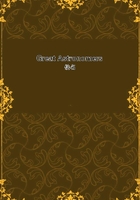
第73章 JOHN HERSCHEL.(6)
Another great work which Sir John undertook after his return from the Cape, was a natural climax to those labours on which his father and he had been occupied for so many years. We have already explained how the work of both these observers had been mainly devoted to the study of the nebulae and the star clusters. The results of their discoveries had been announced to the world in numerous isolated memoirs. The disjointed nature of these publications made their use very inconvenient. But still it was necessary for those who desired to study the marvellous objects discovered by the Herschels, to have frequent recourse to the original works. To incorporate all the several observations of nebular into one great systematic catalogue, seemed, therefore, to be an indispensable condition of progress in this branch of knowledge. No one could have been so fitted for this task as Sir John Herschel. He, therefore, attacked and carried through the great undertaking. Thus at last a grand catalogue of nebulae and clusters was produced. Never before was there so majestic an inventory. If we remember that each of the nebulae is an object so vast, that the whole of the solar system would form an inconsiderable speck by comparison, what are we to think of a collection in which these objects are enumerated in thousands? In this great catalogue we find arranged in systematic order all the nebulae and all the clusters which had been revealed by the diligence of the Herschels, father and son, in the Northern Hemisphere, and of the son alone in the Southern Hemisphere. Nor should we omit to mention that the labours of other astronomers were likewise incorporated. It was unavoidable that the descriptions given to each of the objects should be very slight. Abbreviations are used, which indicate that a nebula is bright, or very bright, or extremely bright, or faint, or very faint, or extremely faint. Such phrases have certainly but a relative and technical meaning in such a catalogue. The nebulae entered as extremely bright by the experienced astronomer are only so described by way of contrast to the great majority of these delicate telescopic objects. Most of the nebulae, indeed, are so difficult to see, that they admit of but very slight description. It should be observed that Herschel's catalogue augmented the number of known nebulous objects to more than ten times that collected into any catalogue which had ever been compiled before the days of William Herschel's observing began. But the study of these objects still advances, and the great telescopes now in use could probably show at least twice as many of these objects as are contained in the list of Herschel, of which a new and enlarged edition has since been brought out by Dr. Dreyer.
One of the best illustrations of Sir John Herschel's literary powers is to be found in the address which he delivered at the Royal Astronomical Society, on the occasion of presenting a medal to Mr.